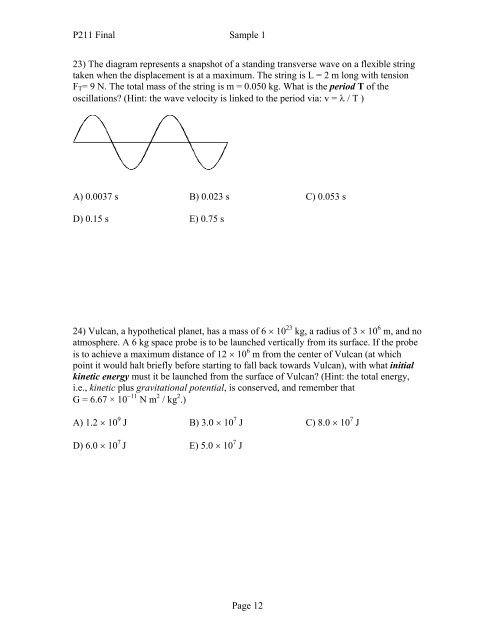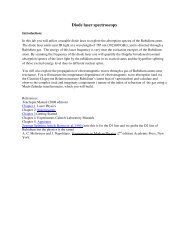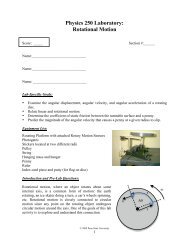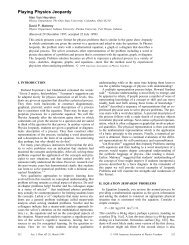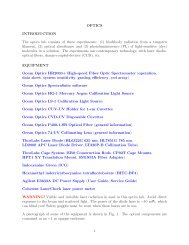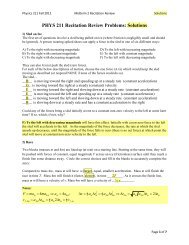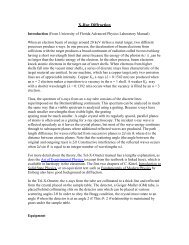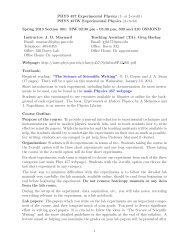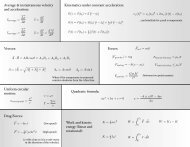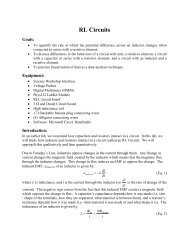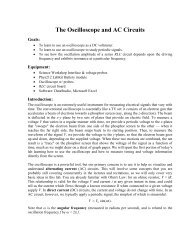0 5 10 15 20 25 30 0 2 4 6 Time (s) X (m) 8
0 5 10 15 20 25 30 0 2 4 6 Time (s) X (m) 8
0 5 10 15 20 25 30 0 2 4 6 Time (s) X (m) 8
You also want an ePaper? Increase the reach of your titles
YUMPU automatically turns print PDFs into web optimized ePapers that Google loves.
P211 Final Sample 1<br />
23) The diagram represents a snapshot of a standing transverse wave on a flexible string<br />
taken when the displacement is at a maximum. The string is L = 2 m long with tension<br />
F T = 9 N. The total mass of the string is m = 0.050 kg. What is the period T of the<br />
oscillations? (Hint: the wave velocity is linked to the period via: v = λ / T )<br />
A) 0.0037 s B) 0.023 s C) 0.053 s<br />
D) 0.<strong>15</strong> s E) 0.75 s<br />
24) Vulcan, a hypothetical planet, has a mass of 6 × <strong>10</strong> 23 kg, a radius of 3 × <strong>10</strong> 6 m, and no<br />
atmosphere. A 6 kg space probe is to be launched vertically from its surface. If the probe<br />
is to achieve a maximum distance of 12 × <strong>10</strong> 6 m from the center of Vulcan (at which<br />
point it would halt briefly before starting to fall back towards Vulcan), with what initial<br />
kinetic energy must it be launched from the surface of Vulcan? (Hint: the total energy,<br />
i.e., kinetic plus gravitational potential, is conserved, and remember that<br />
G = 6.67 × <strong>10</strong> −11 N m 2 / kg 2 .)<br />
A) 1.2 × <strong>10</strong> 9 J B) 3.0 × <strong>10</strong> 7 J C) 8.0 × <strong>10</strong> 7 J<br />
D) 6.0 × <strong>10</strong> 7 J E) 5.0 × <strong>10</strong> 7 J<br />
Page 12


